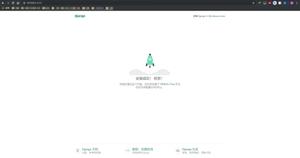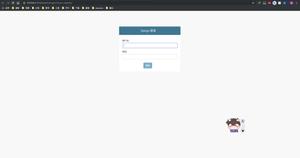Django:配置不正确:SECRET_KEY设置不得为空
我正在尝试设置包括一些基本设置的多个设置文件(开发,生产等)。虽然无法成功。当我尝试运行./manage.py runserver时,出现以下错误:
(cb)clime@den /srv/www/cb $ ./manage.py runserverImproperlyConfigured: The SECRET_KEY setting must not be empty.
这是我的设置模块:
(cb)clime@den /srv/www/cb/cb/settings $ lltotal 24
-rw-rw-r--. 1 clime clime 8230 Oct 2 02:56 base.py
-rw-rw-r--. 1 clime clime 489 Oct 2 03:09 development.py
-rw-rw-r--. 1 clime clime 24 Oct 2 02:34 __init__.py
-rw-rw-r--. 1 clime clime 471 Oct 2 02:51 production.py
基本设置(包含SECRET_KEY):
(cb)clime@den /srv/www/cb/cb/settings $ cat base.py:# Django base settings for cb project.
import django.conf.global_settings as defaults
DEBUG = False
TEMPLATE_DEBUG = False
INTERNAL_IPS = ('127.0.0.1',)
ADMINS = (
('clime', 'clime7@gmail.com'),
)
MANAGERS = ADMINS
DATABASES = {
'default': {
#'ENGINE': 'django.db.backends.postgresql_psycopg2', # Add 'postgresql_psycopg2', 'mysql', 'sqlite3' or 'oracle'.
'ENGINE': 'django.db.backends.postgresql_psycopg2',
'NAME': 'cwu', # Or path to database file if using sqlite3.
'USER': 'clime', # Not used with sqlite3.
'PASSWORD': '', # Not used with sqlite3.
'HOST': '', # Set to empty string for localhost. Not used with sqlite3.
'PORT': '', # Set to empty string for default. Not used with sqlite3.
}
}
# Local time zone for this installation. Choices can be found here:
# http://en.wikipedia.org/wiki/List_of_tz_zones_by_name
# although not all choices may be available on all operating systems.
# In a Windows environment this must be set to your system time zone.
TIME_ZONE = 'Europe/Prague'
# Language code for this installation. All choices can be found here:
# http://www.i18nguy.com/unicode/language-identifiers.html
LANGUAGE_CODE = 'en-us'
SITE_ID = 1
# If you set this to False, Django will make some optimizations so as not
# to load the internationalization machinery.
USE_I18N = False
# If you set this to False, Django will not format dates, numbers and
# calendars according to the current locale.
USE_L10N = False # TODO: make this true and accustom date time input
DATE_INPUT_FORMATS = defaults.DATE_INPUT_FORMATS + ('%d %b %y', '%d %b, %y') # + ('25 Oct 13', '25 Oct, 13')
# If you set this to False, Django will not use timezone-aware datetimes.
USE_TZ = True
# Absolute filesystem path to the directory that will hold user-uploaded files.
# Example: "/home/media/media.lawrence.com/media/"
MEDIA_ROOT = '/srv/www/cb/media'
# URL that handles the media served from MEDIA_ROOT. Make sure to use a
# trailing slash.
# Examples: "http://media.lawrence.com/media/", "http://example.com/media/"
MEDIA_URL = '/media/'
# Absolute path to the directory static files should be collected to.
# Don't put anything in this directory yourself; store your static files
# in apps' "static/" subdirectories and in STATICFILES_DIRS.
# Example: "/home/media/media.lawrence.com/static/"
STATIC_ROOT = '/srv/www/cb/static'
# URL prefix for static files.
# Example: "http://media.lawrence.com/static/"
STATIC_URL = '/static/'
# Additional locations of static files
STATICFILES_DIRS = (
# Put strings here, like "/home/html/static" or "C:/www/django/static".
# Always use forward slashes, even on Windows.
# Don't forget to use absolute paths, not relative paths.
)
# List of finder classes that know how to find static files in
# various locations.
STATICFILES_FINDERS = (
'django.contrib.staticfiles.finders.FileSystemFinder',
'django.contrib.staticfiles.finders.AppDirectoriesFinder',
# 'django.contrib.staticfiles.finders.DefaultStorageFinder',
)
# Make this unique, and don't share it with anybody.
SECRET_KEY = '8lu*6g0lg)9z!ba+a$ehk)xt)x%rxgb$i1&022shmi1jcgihb*'
# List of callables that know how to import templates from various sources.
TEMPLATE_LOADERS = (
'django.template.loaders.filesystem.Loader',
'django.template.loaders.app_directories.Loader',
# 'django.template.loaders.eggs.Loader',
)
TEMPLATE_CONTEXT_PROCESSORS = (
'django.contrib.auth.context_processors.auth',
'django.core.context_processors.request',
'django.core.context_processors.debug',
'django.core.context_processors.i18n',
'django.core.context_processors.media',
'django.core.context_processors.static',
'django.core.context_processors.tz',
'django.contrib.messages.context_processors.messages',
'web.context.inbox',
'web.context.base',
'web.context.main_search',
'web.context.enums',
)
MIDDLEWARE_CLASSES = (
'django.middleware.common.CommonMiddleware',
'django.contrib.sessions.middleware.SessionMiddleware',
'django.middleware.csrf.CsrfViewMiddleware',
'django.contrib.auth.middleware.AuthenticationMiddleware',
'django.contrib.messages.middleware.MessageMiddleware',
'watson.middleware.SearchContextMiddleware',
'debug_toolbar.middleware.DebugToolbarMiddleware',
'middleware.UserMemberMiddleware',
'middleware.ProfilerMiddleware',
'middleware.VaryOnAcceptMiddleware',
# Uncomment the next line for simple clickjacking protection:
# 'django.middleware.clickjacking.XFrameOptionsMiddleware',
)
ROOT_URLCONF = 'cb.urls'
# Python dotted path to the WSGI application used by Django's runserver.
WSGI_APPLICATION = 'cb.wsgi.application'
TEMPLATE_DIRS = (
# Put strings here, like "/home/html/django_templates" or "C:/www/django/templates".
# Always use forward slashes, even on Windows.
# Don't forget to use absolute paths, not relative paths.
'/srv/www/cb/web/templates',
'/srv/www/cb/templates',
)
INSTALLED_APPS = (
'django.contrib.auth',
'django.contrib.contenttypes',
'django.contrib.sessions',
'django.contrib.sites',
'django.contrib.messages',
'django.contrib.staticfiles',
'south',
'grappelli', # must be before admin
'django.contrib.admin',
'django.contrib.admindocs',
'endless_pagination',
'debug_toolbar',
'djangoratings',
'watson',
'web',
)
AUTH_USER_MODEL = 'web.User'
# A sample logging configuration. The only tangible logging
# performed by this configuration is to send an email to
# the site admins on every HTTP 500 error when DEBUG=False.
# See http://docs.djangoproject.com/en/dev/topics/logging for
# more details on how to customize your logging configuration.
LOGGING = {
'version': 1,
'disable_existing_loggers': False,
'filters': {
'require_debug_false': {
'()': 'django.utils.log.RequireDebugFalse'
}
},
'formatters': {
'standard': {
'format' : "[%(asctime)s] %(levelname)s [%(name)s:%(lineno)s] %(message)s",
'datefmt' : "%d/%b/%Y %H:%M:%S"
},
},
'handlers': {
'mail_admins': {
'level': 'ERROR',
'filters': ['require_debug_false'],
'class': 'django.utils.log.AdminEmailHandler'
},
'null': {
'level':'DEBUG',
'class':'django.utils.log.NullHandler',
},
'logfile': {
'level':'DEBUG',
'class':'logging.handlers.RotatingFileHandler',
'filename': "/srv/www/cb/logs/application.log",
'maxBytes': 50000,
'backupCount': 2,
'formatter': 'standard',
},
'console':{
'level':'INFO',
'class':'logging.StreamHandler',
'formatter': 'standard'
},
},
'loggers': {
'django.request': {
'handlers': ['mail_admins'],
'level': 'ERROR',
'propagate': True,
},
'django': {
'handlers':['console'],
'propagate': True,
'level':'WARN',
},
'django.db.backends': {
'handlers': ['console'],
'level': 'DEBUG',
'propagate': False,
},
'web': {
'handlers': ['console', 'logfile'],
'level': 'DEBUG',
},
},
}
LOGIN_URL = 'login'
LOGOUT_URL = 'logout'
#ENDLESS_PAGINATION_LOADING = """
# <img src="/static/web/img/preloader.gif" alt="loading" style="margin:auto"/>
#"""
ENDLESS_PAGINATION_LOADING = """
<div class="spinner small" style="margin:auto">
<div class="block_1 spinner_block small"></div>
<div class="block_2 spinner_block small"></div>
<div class="block_3 spinner_block small"></div>
</div>
"""
DEBUG_TOOLBAR_CONFIG = {
'INTERCEPT_REDIRECTS': False,
}
import django.template.loader
django.template.loader.add_to_builtins('web.templatetags.cb_tags')
django.template.loader.add_to_builtins('web.templatetags.tag_library')
WATSON_POSTGRESQL_SEARCH_CONFIG = 'public.english_nostop'
设置文件之一:
(cb)clime@den /srv/www/cb/cb/settings $ cat development.py from base import *
DEBUG = True
TEMPLATE_DEBUG = True
ALLOWED_HOSTS = ['127.0.0.1', '31.31.78.149']
DATABASES = {
'default': {
'ENGINE': 'django.db.backends.postgresql_psycopg2',
'NAME': 'cwu',
'USER': 'clime',
'PASSWORD': '',
'HOST': '',
'PORT': '',
}
}
MEDIA_ROOT = '/srv/www/cb/media/'
STATIC_ROOT = '/srv/www/cb/static/'
TEMPLATE_DIRS = (
'/srv/www/cb/web/templates',
'/srv/www/cb/templates',
)
代码在manage.py:
(cb)clime@den /srv/www/cb $ cat manage.py #!/usr/bin/env python
import os
import sys
if __name__ == "__main__":
os.environ.setdefault("DJANGO_SETTINGS_MODULE", "cb.settings.development")
from django.core.management import execute_from_command_line
execute_from_command_line(sys.argv)
如果添加from base import *到/srv/www/cb/cb/settings/__init__.py(否则为空),它会神奇地开始工作,但我不明白为什么。任何人都可以向我解释这是怎么回事?它一定是一些python模块魔术。
编辑:如果我从base.py删除此行,一切也将开始工作
django.template.loader.add_to_builtins('web.templatetags.cb_tags')如果我从web.templatetags.cb_tags中删除此行,它也将开始工作:
from endless_pagination.templatetags import endless我想这是因为最终导致
from django.conf import settingsPER_PAGE = getattr(settings, 'ENDLESS_PAGINATION_PER_PAGE', 10)
因此,它会产生一些怪异的循环内容并结束游戏。
回答:
我有同样的错误,结果是设置加载的模块或类与设置模块本身之间存在循环依赖关系。在我的情况下,这是一个中间件类,该类在设置中被命名,该类本身试图加载设置。
以上是 Django:配置不正确:SECRET_KEY设置不得为空 的全部内容, 来源链接: utcz.com/qa/426967.html




